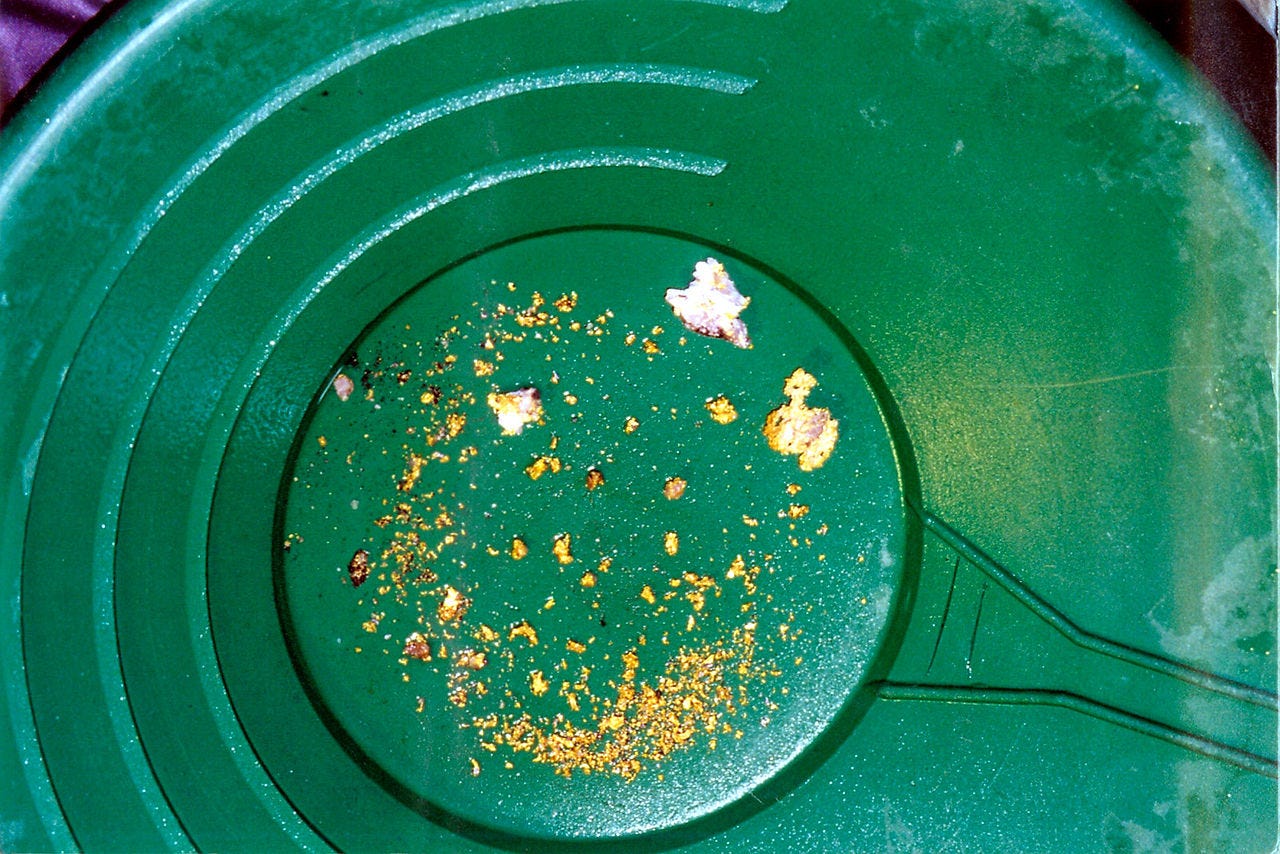Flecks in the gold pan

I’m going to try a variation on an Austin Kleon-style numbered list this week to share what is making it into my gold pan.
Davos and the World Economic Forum. I’ve been tuning in via YouTube to watch some of the conversations and panels.
AI is a big topic, of course. For the most part, the ones I watched seemed to rehash things we already know. I hope it’s just that I missed the really thoughtful ones.
Climate Crisis. I was drawn in by the title of this one—Satellites as storytellers. The first 16 minutes and 14 seconds feature a presentation by Dava Newman. Among other roles, she is Director of the MIT Media Lab. Her presentation is very relevant to the future of education. She is thinking a lot about providing young people with tools they need to have agency (her word) regarding the climate challenges ahead.
Shortly after watching this, I read a post in The Guardian with the alarming title, Third of UK teenagers believe climate change exaggerated, report shows. The report referenced is by CCDH (Center for Countering Digital Hate), a non-profit with offices in the UK and Washington, DC. You can download the full report here—it focuses on YouTube. [Note: I was annoyed that when I clicked to the CCDH’s Our Work and About links, I couldn’t easily find anything about the people who founded and currently run the org—beyond what The Guardian had to say—Imran Ahmed is chief executive of the CCDH. Come on guys. That’s basic for credibility. But in this case, I’m putting faith in The Guardian’s vetting, and I won’t bore you with my own CCDH background research.] Primarily, the CCDH focuses on Online Hate, and on Dis/Misinformation. They’re doing a lot. Explore here.
Speaking of YouTube use by young people, Pew Research Center put out this report on December 11, 2023 titled Teens, Social Media and Technology 2023. The report found 13- to 17-year-olds use YouTube more than any other social media platform. The CCDH report and the Pew Research Center report complement each other and would be strong catalysts for deeper exploration into mis/disinformation with young people. They need safe and inviting spaces for these conversations.
AI beyond Davos. I read and watch and filter a lot on the topic of AI and GenAI.
I appreciate the work Common Sense Media is doing in education. In a recent post I mentioned their new AI ratings system. They also have a Grades 6-12 set of AI Literacy Lessons that I mentioned in that same post. I’m guessing you might have missed that so I am calling your attention to it again. I think our younger kids and students could benefit from co-viewing some of these with the adults in their lives, followed by conversation.
I have watched a few talks by Jaron Lanier, most recently, one he gave at UC Berkeley—Data Dignity and the Inversion of AI. Jaron brought his early prototype VR headset to our “Cyberlab” some decades ago and I had my first experience with immersive VR there in our digital makerspace (definitely what I call a vista moment). Jaron’s talk is 48 minutes long (Q&A at end) and is part of a series that I’ve really enjoyed. He flips the AI conversation on its head. Great food for thought. And it is an encouraging vision.
I also watched Alison Gopnik’s talk in this series, titled Imitation and Innovation in AI: What Four-year-olds Can Do and AI Can’t (Yet). Alison has authored some great books, including The Gardener and the Carpenter: What the New Science of Child Development Tells Us About the Relationship Between Parents and Children which I have written about here.
If you find yourself a bit lost in the black box of AI, these two talks may open the territory up for you.
The NYT offered a quiz: Test Yourself: Which Faces Were Made by A.I.? If you subscribe, this is a good conversation catalyst to try with your kids. I got 5 out of 10 right (or wrong), depending on how you frame it. If you or your kids get 10 right, I want to know.
Cooperative Games. December was gift giving and receiving season. My granddaughter received a lot of games. Last night we played Race to the Treasure! It was a short game, with easy set up, and fun to play with 2 people. The ogres won the race to the treasure but we were very close. It was fun to lose together.
Children & Nature Network. Minnesota invests in new Teacher Field School to scale up nature-based learning across the state. “Spending time in nature during childhood and role models who care for nature are the two biggest factors that contribute to environmental stewardship in adulthood, according to a number of studies.” Check out the post.
Elsewhere on Substack: Anya Kamenetz writes The Golden Hour. I’m attending a webinar she’s hosting on January 30—Parenting in the Climate Crisis: Self Care, Connections, and Support. Link here to register.
Share The Interconnect with an educator you love.
Take good care. Be well.


